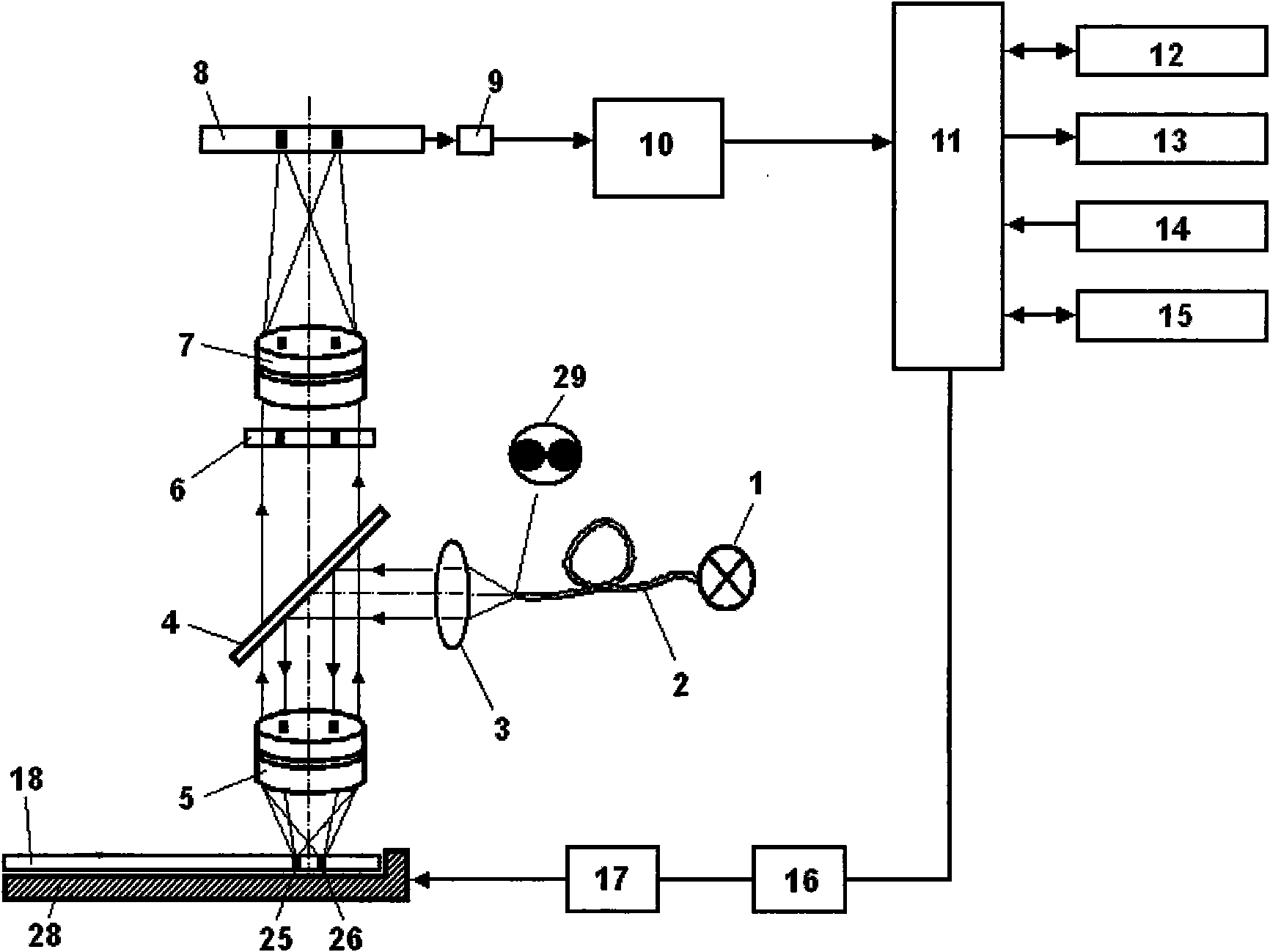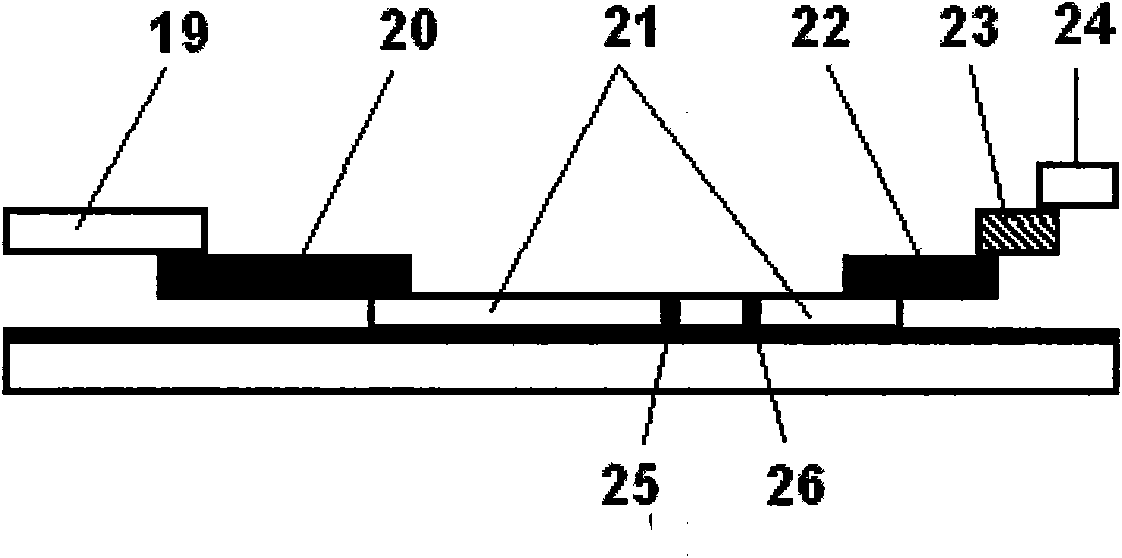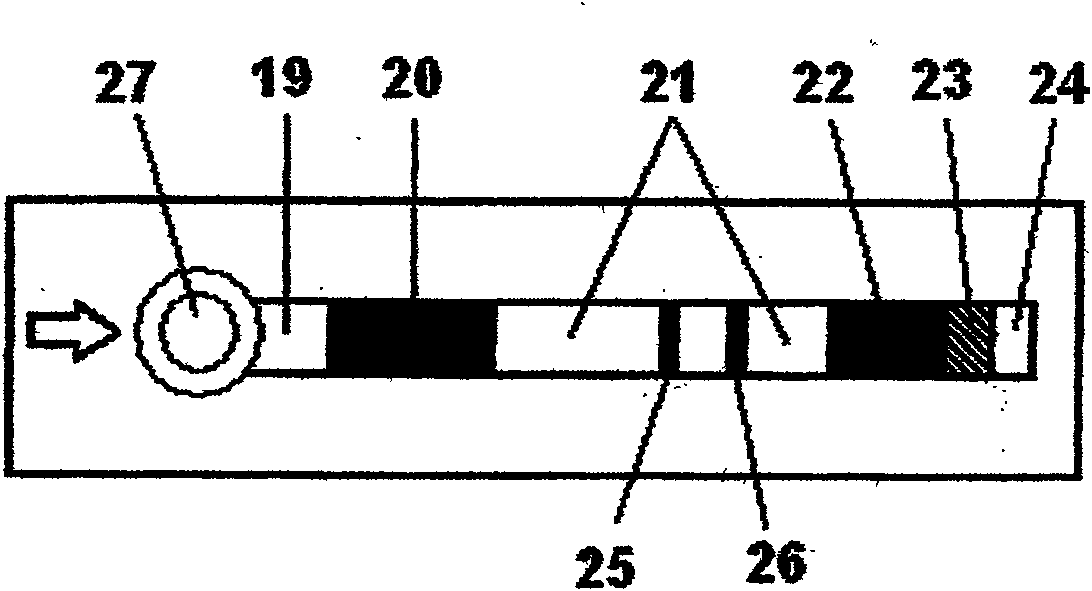System and method for quantitative detection of test strips on basis of continuous fluorescent-substance markers
A quantitative detection and fluorescent technology, applied in biological testing, fluorescence/phosphorescence, chemical instruments and methods, etc., can solve the problems of poor objectivity of measurement results, complicated operations, and no disclosure of instrument detection systems.
- Summary
- Abstract
- Description
- Claims
- Application Information
AI Technical Summary
Problems solved by technology
Method used
Image
Examples
Embodiment 1
[0064] Example 1 Continuous Fluorescent Labeled Test Strip Quantitative Detection System Structure, Workflow and Detection Method
[0065] (1) Structure of quantitative detection system for continuous fluorescent substance-labeled test strips
[0066] figure 1 It is a structural block diagram of the quantitative detection system for the continuous fluorescent substance labeling test strip of the present invention. Described quantitative detection system comprises continuous fluorescent substance labeling test strip 18, is used to place the test strip rack 28 of test strip, illumination system, imaging system, fluorescence image receiver 8, signal amplifier 9, analog / digital converter 10, data processing And control system 11, output display device 12, printer 13, keyboard 14 and an IC card 15 supporting with test strip.
[0067] The test strip rack 28 of the system has test strip slots. The test strip groove is used for placing the test strip 18 marked with persistent fluor...
Embodiment 2
[0090] Example 2 Quantum dots are used as continuous fluorescent substance labeling test strips to detect hepatitis B surface antigen HBsAg (single detection)
[0091] (1) Production of HBsAg test strips labeled with quantum dots
[0092] The quantum dot labeled test strip for the detection is provided with a sample pad 19 that overlaps and sticks to each other, a glass fiber membrane binding pad 20 coated with a quantum dot-labeled HBsAg monoclonal antibody, a detection zone 25 and a quality control zone. (26) The analysis membrane 21, the strong water-absorbing pad 22, the test strip reaction end point indicator label 23 and the "HBsAg" test strip identification label (24). The detection zone 25 is coated with HBsAg monoclonal antibody. The quality control zone 26 is coated with a secondary antibody quality control substance goat anti-mouse IgM antibody, or goat anti-mouse IgG antibody, or rabbit anti-mouse IgM antibody, or rabbit anti-mouse IgG antibody.
[0093] 1. Prepa...
Embodiment 3
[0125] Example 3 Quantum dots are used as continuous fluorescent substance labeling test strips to detect serum tumor markers AFP, CEA and PSA (multiple items in one test)
[0126] (1) Production of quantum dot-labeled tumor markers with multiple test strips
[0127] The test strip 18 is sequentially provided with a sample pad 19 that overlaps and sticks to each other, a glass fiber membrane bonding pad 20, an analysis membrane 21 with a detection strip 25 and a quality control strip 26, a strong water-absorbing pad 22, and an indicator label for the end of the test strip reaction. (23) and "AFP / CEA / PSA" test strip identification label 24. The glass fiber membrane binding pad 20 is coated with a mixture of quantum dot-labeled alpha-fetoprotein (AFP) monoclonal antibody, quantum dot-labeled carcinoembryonic antigen (CEA) monoclonal antibody, and quantum dot-labeled prostate-specific antigen (PSA) monoclonal antibody The detection zone 25 is coated with the mixture of AFP antib...
PUM
 Login to View More
Login to View More Abstract
Description
Claims
Application Information
 Login to View More
Login to View More - R&D
- Intellectual Property
- Life Sciences
- Materials
- Tech Scout
- Unparalleled Data Quality
- Higher Quality Content
- 60% Fewer Hallucinations
Browse by: Latest US Patents, China's latest patents, Technical Efficacy Thesaurus, Application Domain, Technology Topic, Popular Technical Reports.
© 2025 PatSnap. All rights reserved.Legal|Privacy policy|Modern Slavery Act Transparency Statement|Sitemap|About US| Contact US: help@patsnap.com



